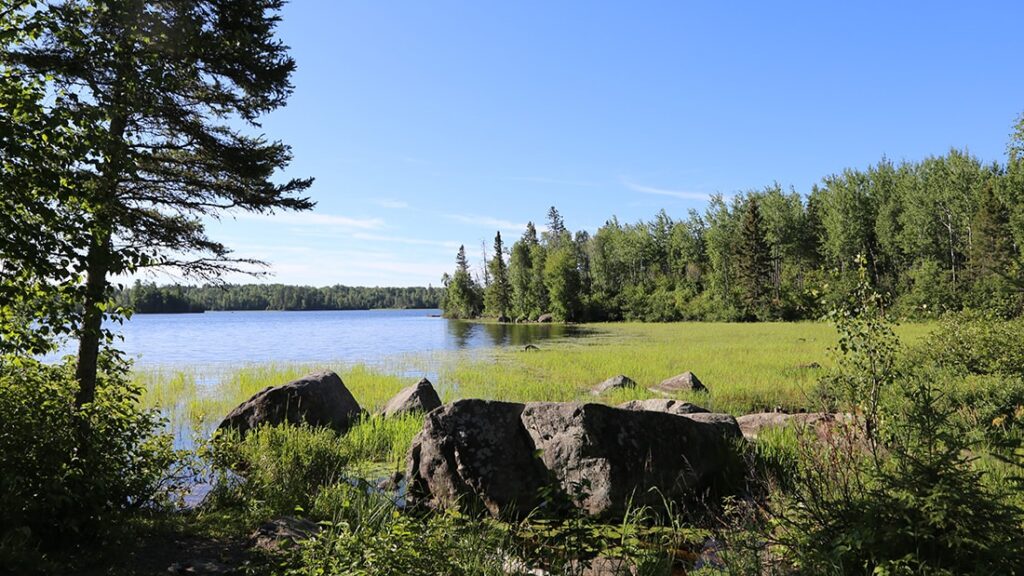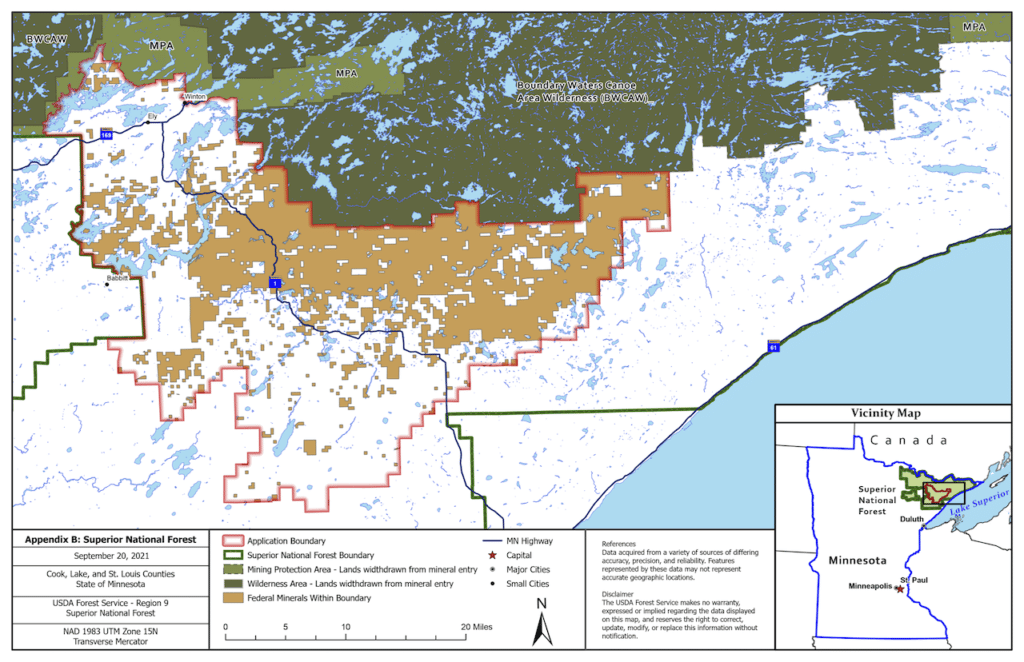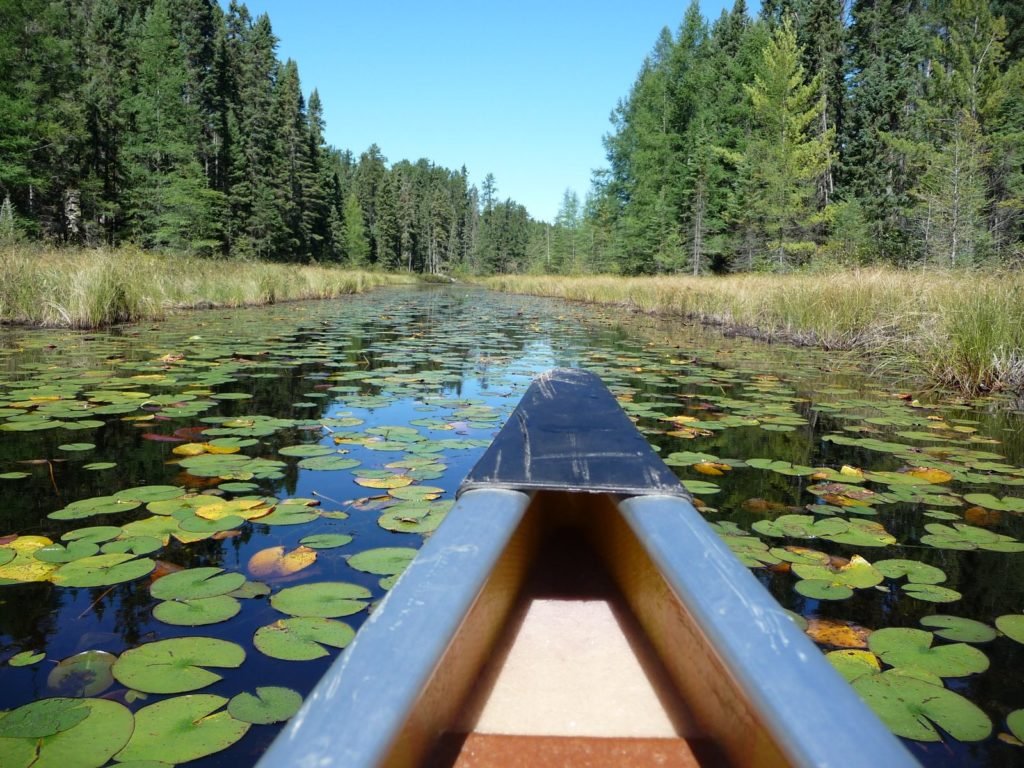
A long-delayed study conducted by the U.S. Forest Service into the question of environmental threats to the Boundary Waters Canoe Area Wilderness from proposed copper-nickel mining has finally been released. The agency published documents this week that analyze a 20-year ban on mining within the wilderness watershed.
“The purpose of the requested withdrawal is to protect and preserve the air quality, water quality, aquatic and terrestrial wildlife habitat, night skies, soundscape, treaty resources, and high-quality recreation and wilderness values contained in those lands,” the agency wrote in the environmental assessment.
Forest Service officials are now formally requesting the moratorium, and will accept public feedback during a 30-day comment period initiated Friday, June 24.
“The environmental assessment released today provides a strong scientific foundation for a 20-year ban on copper mining near the Boundary Waters,” said Becky Rom, National Chair for the Campaign to Save the Boundary Waters. “It is deeply rooted in peer-reviewed science, law, and established federal public lands policy, and validates the concerns of local residents and the American people about the risk sulfide-ore copper mining poses to the Wilderness. It is clear beyond a shadow of a doubt that the watershed of the Boundary Waters is the wrong place for this risky type of mining.”

If put into effect, the moratorium would prohibit leasing of about 225,000 acres of federally-owned mineral rights on the Superior National Forest, upstream of the wilderness. The ban would effectively end Chilean company Antofagasta’s proposed Twin Metals mine. That project would be an underground mine located less than three miles from the edge of the Boundary Waters, and upstream of several cherished lakes in the Ely area.
Numerous risks
The 93-page environmental assessment (PDF) looked at mining impacts ranging from noise pollution to wildlife habitat, and to protecting the region’s famous clean water and wild lakes and rivers. It found numerous significant impacts could be connected to any mining operation in the area.
“Routine operational discharge from mining operations may have impacts on the health of aquatic systems, including from both the physical (volume, change in flow) and chemical makeup (addition of chemical constituents such as nutrients, salts, or metals) of discharge water,” the Forest Service found. “The primary risk from accidents and failures is the potential impact to water quality by emitting metals, sulfate, acid drainage, suspended solids, and other chemicals.”
The agency also found that noise pollution would likely affect the Birch Lake and South Kawishiwi River area, where campgrounds, resorts, trails, and a lot of other recreational facilities are focused. And it pointed out that mining would even threaten the Boundary Waters’ important role in a lot of scientific research.
“The Boundary Waters Canoe Area Wilderness is frequently used for scientific research in a largely unmodified landscape. Any long-term changes to wilderness ecological processes could preclude this wilderness from this type of research, in particular the portion of the wilderness closest to the area of highest potential for mine infrastructure.”

Significant step
The study was commenced in late 2016, during the waning days of the Obama administration, along with several other steps to consider protection of the popular wilderness. President Trump cancelled the study and took other steps to restart the mine proposal during his term, but President Biden quickly resumed Obama’s efforts.
Twenty years is the maximum time allowed for a mineral withdrawal by executive action. A permanent prohibition on copper mining in the wilderness watershed would require Congressional legislation, like that proposed by Rep. Betty McCollum and currently under consideration in the House of Representatives.
“This pristine, precious wilderness demands permanent protection,” McCollum said. “The EA’s scientific foundation leaves no doubt: it is simply too risky to mine in this location. The proposed 20-year withdrawal is absolutely justified – and to avoid the type of political intervention we previously saw from the Trump administration, my legislation must pass to permanently protect this federal Wilderness and the interests of the American people in perpetuity.”
Minnesota Senators Amy Klobuchar and Tina Smith recently told the Star Tribune’s editorial board that they have been waiting until the environmental assessment is released to introduce companion legislation to McCollum’s bill in the Senate. Today’s announcement may serve as that milestone.
The withdrawal would not affect the proposed PolyMet copper-nickel mine, which would be located near the headwaters tributaries of the St. Louis River, a Lake Superior tributary.
More information:
- Rainy River Withdrawal Environmental Assessment (PDF)
- Forest Service releases study of threats posed by copper-nickel mines near the BWCA – WTIP
- Forest Service: Copper-nickel mining poses threat to Boundary Waters – Duluth News Tribune

